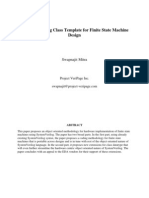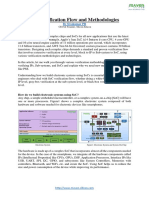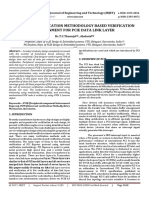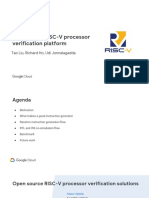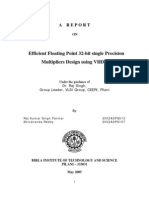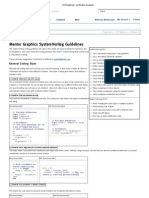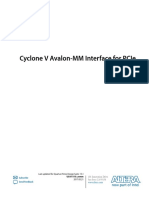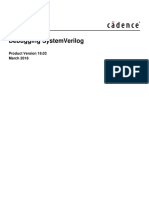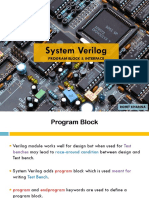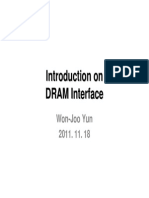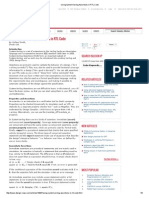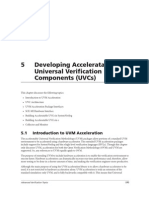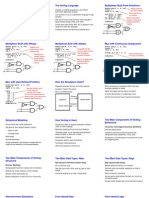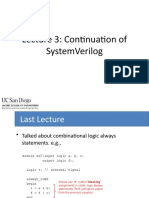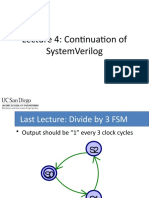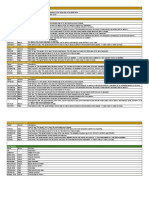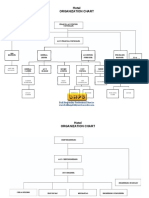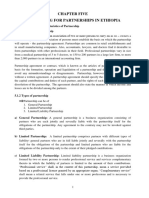100% found this document useful (1 vote)
438 views39 pagesSystemVerilog and Verification Slides
The document discusses SystemVerilog and verification concepts. It provides an overview of SystemVerilog, including how it combines features from Verilog, VHDL, C/C++ and other languages. It describes constructing a basic testbench topology in SystemVerilog, including using modules, interfaces, transactions, drivers and monitors. It also covers verification concepts like assertions and coverage.
Uploaded by
Sivasubramanian ManickamCopyright
© © All Rights Reserved
We take content rights seriously. If you suspect this is your content, claim it here.
Available Formats
Download as PPTX, PDF, TXT or read online on Scribd
100% found this document useful (1 vote)
438 views39 pagesSystemVerilog and Verification Slides
The document discusses SystemVerilog and verification concepts. It provides an overview of SystemVerilog, including how it combines features from Verilog, VHDL, C/C++ and other languages. It describes constructing a basic testbench topology in SystemVerilog, including using modules, interfaces, transactions, drivers and monitors. It also covers verification concepts like assertions and coverage.
Uploaded by
Sivasubramanian ManickamCopyright
© © All Rights Reserved
We take content rights seriously. If you suspect this is your content, claim it here.
Available Formats
Download as PPTX, PDF, TXT or read online on Scribd
/ 39







